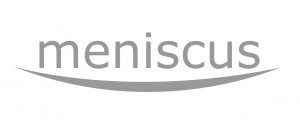| MCE: | Meniscus Calculation Engine. The original analytics platform used for small to medium sized applications with less than 50,000 Items in total. Has a defined 4 tier data structure and is the basis for the Analytics API. |
|---|---|
| Data Point: |
The underlying building block used by MCE. It comprises a time/value pair along with a flag that identifies if the value has been derived from insufficient data. An example of a DataPoint is: 12/07/2012 06:45 17.56 1 |
| Data Point List: |
A time ordered set of DataPoints. |
| Group: |
Groups are used to provide some structure to the grouping of the Items. Company is the top level Group and Items cannot be assigned to this level. All Items created are automatically associated to Site. Groups are associated to Sites and Sub Groups are associated to Groups. The overall structure is: Site YYYY Group AAAA SubGroup 1A SubGroup 1B Group BBBB SubGroup 1C Site ZZZZ Group CCCC SubGroup 1D |
| RAW data | Real world data that is uploaded for a given RAW Item. MCE converts this RAW Data into CALCulated Data. This RAW Data is passed to MCE as a DataPointList. |
| CALCulated data | The output of an Item. The CALCulated Data is returned from MCE as a DataPointList. |
| Items | Items are the key building blocks behind MCE. Items contain specific properties that manage how different types of RAW Data are used, how they are aggregated, and the conversions, calculations, costs and targets used to create the CALCulated Data.
Each Group can contain any number of Items. Items define the way a DataPoint or DataPointList is processed. Items contain specific properties that manage how different types of RAW Data are used, how they are aggregated, and the conversions, calculations, costs and targets used to create the CALCulated Data. The full name of an Item is Company|Site|Group|SubGroupGroup|Item Type Group and SubGroup can be omitted. Company|Site are compulsory |
| Item Types | Each Item can contain up to 7 Item Types, namely :
RAW, CALC, HCALC, LCALC, TARGET, COST and TARGETCOST. When creating an Item, the RAW Item Type is created implicitly when the CALC Item Type is created. The HCALC, LCALC and TARGET Item Types can only be created once the CALC Item Type is created. The COST Item Type is created implicitly when a Cost is assigned to an Item. The TARGETCOST Item Type is created implicitly when a TARGET Item Type is created and when a Cost is assigned to an Item. |
LATEST NEWS
Meniscus Newsletter
Contact us
Phone:
+44 (0) 1737 846100
Email:
[email protected]
Address:
Millfield
Dorking Road
Tadworth
Surrey
KT20 7TD
